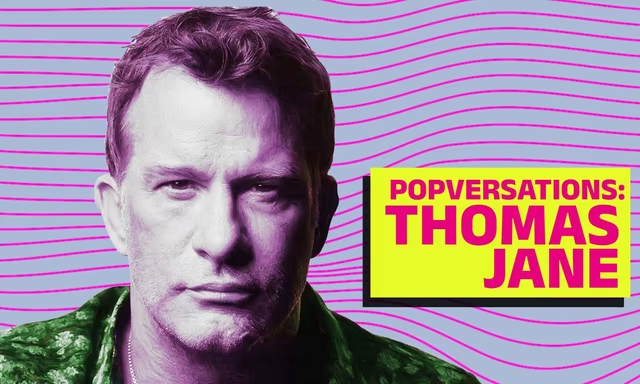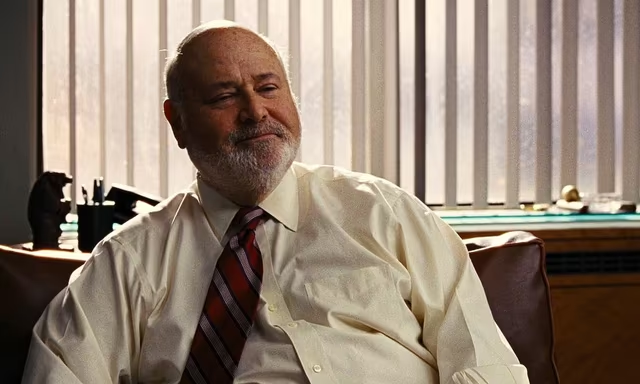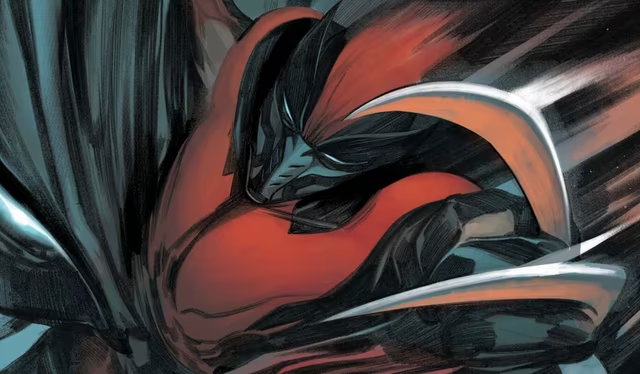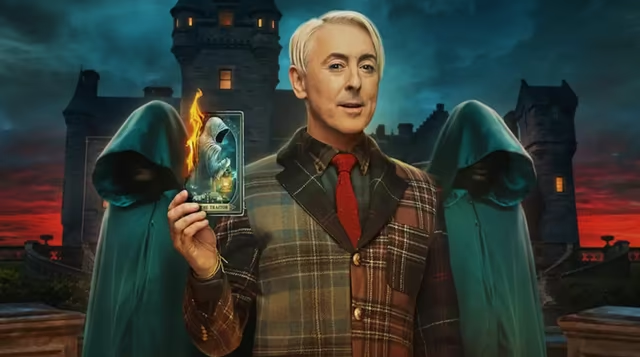If you click on a link and make a purchase we may receive a small commission. Read our editorial policy.
Three big differences between Marvel and DC event series
Marvel and DC each love event series; but the forms those series take vary in very specific ways.

I’m a little obsessed with DC and Marvel comic book events. I was a kid when Marvel Super Heroes Secret Wars and Crisis on Infinite Earths came out. They were so totally different. Secret Wars, by Jim Shooter, Mike Zeck, and Bob Layton, was like an '80s arena rock concert on the moon; Crisis, from Marv Wolfman and George Perez, like a Shakespearean tragedy. I wasn’t even reading DC much at the time and still that cover of Superman cradling his dead cousin just destroyed me.
What none of us knew at the time was the ways that those two series would come to mold how their companies think about events. While both companies do lots of different kinds of event series, they each have some pretty distinct patterns, too, patterns which began with those initial events.
DC does crises, Marvel does wars

'Crisis' is a term with a long history at DC. Originally it was used to describe moments when the Justice League of Earth-1 and the Justice Society of Earth-2 teamed-up, in early issues of Justice League of America. So in 1963’s Crisis On Earth One (JLA #21-22), the JSA and the Justice League come together to fight a set of villains from the two universes who are working together. (They actually come together by way of a séance, believe it or not.)
But the term quickly expanded to include other universes; in JLA 135-136’s 'Crisis in Eternity,' the JSA & JLA teamed up with the then-Captain Marvel heroes of Earth-S. In 1982’s five part saga 'Crisis on Earth Prime!' the JLA and JSA first battle the Crime Syndicate of Earth-3, then the JLA travels into the past of Earth-2 to team-up with the All Star Squadron against their common enemy, the time traveling Per Degaton.
But with the 1985 line-wide event Crisis on Infinite Earths, 'crisis' became DC’s go-to term for big events. And COIE established a pretty specific character for these events: a DC crisis generally involves some sort of external villain that threatens the entire universe or multiverse. So in Crisis on Infinite Earths, the cosmic entity known as the Anti-Monitor is slowly obliterating every universe in the multiverse. In Grant Morrison’s 2008 Final Crisis the super heroes gather to try and fight off Darkseid before the Earth is sucked into a black hole created by his presence. (But in a twist it turns out another cosmic figure, the Dark Monitor, is behind Darkseid’s presence on Earth in the first place. Post-Crisis on Infinite Earths, most major DC events usually look back to Crisis on Infinite Earths in big and small ways—the big bad is somehow connected to it; there are red skies before disaster strikes; someone is threatened with death in a horribly gruesome body dissolving way.
Not every crisis fits this pattern—Brad Meltzer and Rag Morales’ 2004 series Identity Crisis, for instance, is about the JLA investigating who amongst them killed Sue Dibny, Elongated Man’s wife and partner. There are also other events, like Scott Snyder and Greg Capullo’s 2020-21 story Dark Nights: Death Metal, which consciously avoided the 'Crisis' title but very much fit the bill of a massive, universe-affecting event that involves the DC heroes battling cosmic forces far beyond them.

Meanwhile, for Marvel the monicker and metaphor for big events post-Secret Wars has usually been 'war.' And as was the case in that event, major Marvel events usually involve Marvel heroes fighting each other. So the Mark Millar/Steve McNiven 2006 book Civil War pitted Tony Stark’s pro-super hero registration forces against Captain America’s resisters. Brian Michael Bendis and David Marquez’ Civil War II in 2016 had Captain Marvel facing off against Tony Stark about how to deal with a series of predictions of the future which seem to be coming true. World War Hulk, from Greg Pak and John Romita, Jr. saw Hulk returning to Earth in 2007 to seek revenge on the heroes who banished him to a distant world. So many mutant events over the years, from Inferno and Age of Apocalypse to more recent minis pit mutants against other heroes or one another.
In most of these comics, the underlying problem is not some external dilemma but a philosophical question, like what constitutes right or ethical action? Or, when you can only save this group or that one, which do you choose?
Even Jonathan Hickman’s Avengers and New Avengers series (2012-2016), which together told one longform reimagining of Crisis on Infinite Earths, ended up being a primarily ethical, not cosmic conflict. The question was whether it was acceptable to destroy alternate earths to save your own.
DC does hope vs. darkness, Marvel does ambiguity

In the Marvel universe, because event comics are generally about a conflict in point of view, they tend to play in the grey area of morality. There are good reasons to try and stop the Phoenix 5 in Avengers vs. X-Men as well as to save them, to stop crime predicted by a psychic before it happens as well as to resist doing that. The fact that both sides are in their own way persuasive keeps the story interesting.
Meanwhile, in DC events the real question is almost never who is right, but whether or not hope can overcome 'the darkness,' aka the hardship and despair of the present moment. Even in a book like the 2005-2006 Geoff Johns’ mini Infinite Crisis, which at first presents as a much more Marvel-like event—Superman, Batman, and Wonder Woman are at odds—their conflict ends up being put into a larger cosmic context of something being “wrong” with the DC universe, that COIE somehow screwed things up. Once again external forces—now Earth 3’s Alexander Luthor and Earth-Prime’s Superboy from COIE—end up being the villains that everyone has to rally to stop, as they try to “fix” the universe, in Superboy’s case by trying to generate a new Big Bang.
DC does universe fixes, Marvel does story turns

This might be the biggest difference between the two companies' events; certainly it has the biggest implications. When DC does a crisis, the result is almost always cosmic level changes to its universe and its characters. COIE put all of its characters together in one universe. Infinite Crisis created 52 universes, and intended to change the tone of the DC universe to something lighter. The resolution of the 2011 Geoff Johns/Andy Kubert event Flashpoint ends up literally rebooting the DC universe and all of its characters. (Flashpoint in some ways presents as a Marvel event; when Barry Allen goes back in time to prevent Reverse-Flash from killing his mother, he creates an alternate universe in which some heroes are now villains and they all fight each other. But that’s not what creates the New 52; rather, in classic DC form, mysterious cosmic forces steal ten years from the DC Universe, effectively starting it over.)
Oftentimes these cosmic changes reflect some problem in the makeup of the DC Universe that DC editorial wants to fix. Infinite Crisis talks a lot about the need to 'lighten' the DC Universe, a clear commentary from DC editorial on the current state of the DC universe. Ironically, their fix also created one of the darkest and most sadistic characters in the history of the DC universe, Superboy-Prime. He was also so powerful as to create new story problems.

One of the persistent issues with DC crises, in fact, is that their fixes often create other issues that then need to be fixed. The New 52 is a case in point; this reboot was meant to breathe new life into old characters and stories. But it also made decades of storytelling irrelevant. And the decision to not include some characters, like the Justice Society or Wally West, drove fans insane. (Also in the case of Justice Society it took a well-recognized team from the DC Universe and effectively killed off audience interest in them. Johns’ new JSA book is the first real attempt to bring them back to the DC Universe proper since Johns finished writing them in 2009.)
Marvel does not do line-wide reboots. Each event has implications on the universe and gives characters new direction or puts them on the shelf while also debuting new characters. But the ongoing story of the Marvel universe continues. So for instance when Marvel had the chance to completely reset their universe after Hickman’s Secret Wars literally erased everything, they chose not to do that. The main story ends with Peter Parker and Miles Morales, who now exist in the same universe, swinging through Manhattan together in a gorgeous shot from Esad Ribic.

That’s not to say Marvel events can’t go awry. Secret Empire, in which what seems to be a brain-washed Captain America with Hydra (nee Nazi) sympathies takes over America, drew enormous blowback from fans and critics alike. And an argument could be made that fan interest in the character of Captain America still hasn’t recovered from that storyline. Likewise the 2014 event series AXIS, in which Red Skull takes the brain of the deceased Charles Xavier and uses it to turn the good guys bad and the bad guys good tried to turn serial murderer and rapist Sabretooth into a good guy, which is definitely…a choice.
But a bad event can’t screw up the entire Marvel universe in the same way that a cosmic DC event can. And at their best they open a path to new stories which can become their own interesting events. Secret Invasion followed very naturally on Civil War and led just as smoothly into Dark Reign.
Dark Crisis & AXE: Judgment Day break the molds (some)
DC and Marvel each just finished big events—Dark Crisis on Infinite Earths (DC), by Joshua Williamson, Daniel Sampere and others; and AXE: Judgment Day (Marvel), by Kieron Gillen, Valerio Schiti and others. Neither was exactly a line-wide event. Most of DC and Marvel’s comics just kept going along on their own tracks while they happened (although DC’s event had a lot of minis). But they’re both really interesting for the ways they both matched and resisted the tropes of their company’s line-wide events.
Dark Crisis drew very deeply on Crisis On Infinite Earths—like so many DC crisis stories, its villain Pariah was drawn from COIE, and its story was very much a big cosmic good vs. evil, hope vs. despair kind of event that threatened to completely reboot the DC Universe again.

But at the same time, it didn’t do that. The heroes saved the day, leaving their universe intact. DC is still using the event to begin a year-long initiative called “Dawn of the DC Universe.” But that seems to involve mostly a refreshing of its titles. This was not a classic DC hard reset. Nothing from the current iteration of the DC Universe was being repudiated.
The story did seem to have one universe fix built into its concept: after having established 52 universes, and defining what many of them were, DC has recently generated a series of successful books set in alternate universes not among those 52. So the one significant impact of Pariah’s plot is that now there are an infinite number of alternate universes, as there were before Crisis on Infinite Earths. But that’s a small point. (Although the book’s insistence that the 52 universes from pre-Dark Crisis still exist as a unit that somehow power and stabilize the infinite set seems like a weird wrinkle that may create problems down the road.)
The main epilogue of Dark Crisis comes right from the Marvel playbook. The battles of Dark Crisis having demonstrated just how much heroes are unable to protect people, or even create the danger to them, a shadowy cabal tasks Amanda Waller with finding a way to murder them all. Instead of a reset, we’ve got a story turn.

AXE: Judgment Day likewise begins in classic Marvel fashion: the Eternals’ belief system (i.e. programming) has them believing mutants represent a threat that must be eliminated. Cue fisticuffs.
But solving that conflict involves building a new celestial, about as cosmic a character as you can get in the Marvel universe. And it immediately creates a much bigger problem for everyone in the universe, namely a judgment day in which every single being in the universe is judged on the basis of their own past choices. If a majority are found wanting, the celestial will destroy all of existence.
It’s a wonderful synthesis of Marvel and DC event thinking. On the one hand, the cosmic extinction level event brings our heroes together, as they try desperately to find some way to defeat a being that is entirely beyond them.
At the same time, every moment of judgment is also a Marvel war event writ-small. Each person is fighting in a sense against their past self— what they’ve done, who they’ve been, who they are. The celestial even often appears to each person as they themselves or someone close to them.
It’s clear, both companies have had a lot of success sticking to the molds that are tried and true. But it’s exciting to see what they’re also able to accomplish when they venture outside their comfort zone.
KEep the conversation going with our guides to the best DC Comics and the best Marvel Comics ever.
Follow Popverse for upcoming event coverage and news
Find out how we conduct our review by reading our review policy
Let Popverse be your tour guide through the wilderness of pop culture
Sign in and let us help you find your new favorite thing.
















Comments
Want to join the discussion? Please activate your account first.
Visit Reedpop ID if you need to resend the confirmation email.